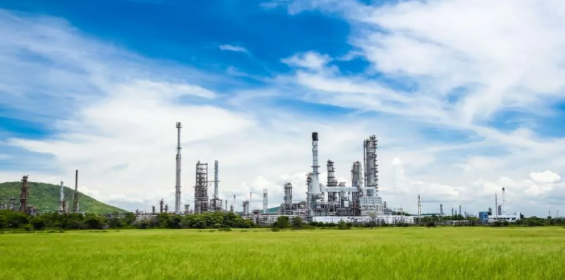Why manufacturers leverage IIoT and asset management to drive sustainability
Published: 31 May, 2023
Pressure to meet environmentally friendly practices is at an all-time high. Especially now that we are seeing a dramatic increase in global temperatures and natural disasters. The United Nations have set out a Net-Zero target and with manufacturing companies accounting for 16% of the carbon emissions for the UK alone, there is a demand for sustainable operations. Prasanna Kulkarni, Product Architect and Libby Taylor, Research Editor of Comparesoft, explain why manufacturers leverage IIoT and asset management to drive sustainability.
There is more pressure from consumers to be sustainable. Becoming a more sustainable company and having evidence of this is an attractive prospect to consumers and the media. Employees want to work for companies that are taking the right steps to tackle climate change. In local areas where manufacturing companies are based, employees are aware of the impact their job field has on their community.
Leading manufacturers see this as an opportunity. Not just to be sustainable but to also improve efficiency and efficacy.
The focus on sustainable manufacturing
Destruction of ecological systems rises through the consumption of raw materials needed in manufacturing and this only rises along with the economic growth of an increasing world population. However, manufacturing asset management can play a key role in ensuring sustainable operations and reducing the number of raw materials extracted and produced.
Extracting raw materials directly impacts the environment and its usage often results in greenhouse gas emissions. Manufacturing asset management can help reduce the effect of extracting raw materials by maintaining plant assets:
Manufacturing asset management focuses on the entire life cycle of a plant asset. Maintaining plant assets extends the life cycle and reduces the need to dispose of parts in landfills as they are being used to their full capacity. Better yet, it helps companies to reuse their equipment and parts which reduces the need to extract raw materials
Manufacturing asset management minimizes errors or maintenance issues that may have a knock-on effect on the environment, such as releasing more carbon or having parts put into landfill when they could be recycled or reused. It is estimated that 80% of materials created by manufacturing companies end up as waste that impacts the environment. By using manufacturing asset management, the amount of waste accumulated by companies will plummet through maintenance and reusing materials. Not only does this have a positive impact on the environment, but it cuts costs and improves the product quality and value of assets.
Around the world, over 100 billion tonnes of material is produced yearly but only 13% is recycled. By using manufacturing asset management to control assets throughout their entire life cycle, companies can create a more sustainable future.
It is clear that when companies align their production goals with sustainability, all parties benefit. Environmentally friendly practices reduce regulatory costs, reduce waste that can harm the environment, and conserves energy.
Using IIoT and Industry 4.0 to drive sustainable manufacturing
Using IIoT is a great way for manufacturing companies to become more sustainable. It can measure the impact of a company’s processes through sensors that monitor a wide range of things such as air and water quality and measure pollution levels around factories. This gives companies the information needed to ensure quick action is taken and reported. With a huge part of manufacturing’s impact on the environment being air pollution, having the ability to monitor air quality around factories and tackle this issue keeps the environment and people safe.
IIoT can also identify the impacts of climate change by measuring flood and river levels, and wind speeds and it can monitor the activity of bees and beehives. Due to the growing population and extreme weather conditions, natural land space is decreasing. IIoT devices can collect data on crucial factors that influence growth.
This results in IIoT being a key part of reducing an organization’s carbon footprint by minimising the use of raw materials, fossil fuels, and water.
Energy usage is one of the largest sources of greenhouse gas emissions around the world and one of UNESCO’s sustainability goals is to create avenues for Affordable and Clean Energy. By using IIoT, manufacturing companies can control their energy usage and they can find the cause of additional energy usage.
While IIoT can play a key role in creating sustainable operations, it does come with its risks. Producing and delivering digital products increases carbon dioxide emissions due to energy requirements. Its pollution can be reduced with effective energy use. Still, it cannot be denied that IIoT presents are much more positive future for sustainability in manufacturing than before, and along with Industry 4.0, its potential cannot be ignored.
Despite the benefits of using this technology, why haven’t more companies begun using it?
According to Neil Malik, the main reasons are the complexity of incorporating it into a company and inadequate life cycle support. These issues can be resolved through the work of programmers and by using engineering resources.
By blending modern software and hardware capabilities, industrial companies can place themselves at the forefront of a new wave of thinking when it comes to sustainable operations. There is no doubt that along with the ticking time bomb that is climate change, industrial companies can become market leaders in doing their part to tackle greenhouse gas emissions and pollution.
If an organisation can incorporate modern technology such as asset management and IIoT, it can better understand the maintenance of its assets and minimise inefficiencies. Organizations can make better decisions about when to replace assets and reduce the time and effort spent on them. This will reduce the organization’s impact on the environment and become a sustainable operator.
Manufacturers have a big part in taking responsibility for climate change, and with new technology to help the environment and lead to better operations. By jumping into Industry 4.0, manufacturing companies can use innovative technology to save money and create a reputation for doing their part to combat the climate crisis.
https://twitter.com/comparesoft
https://www.linkedin.com/company/comparesoft/







